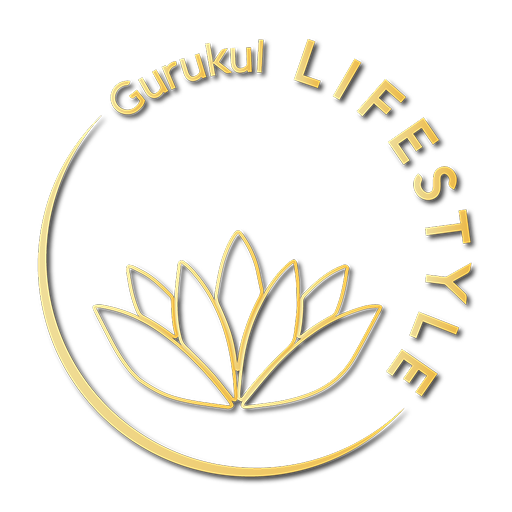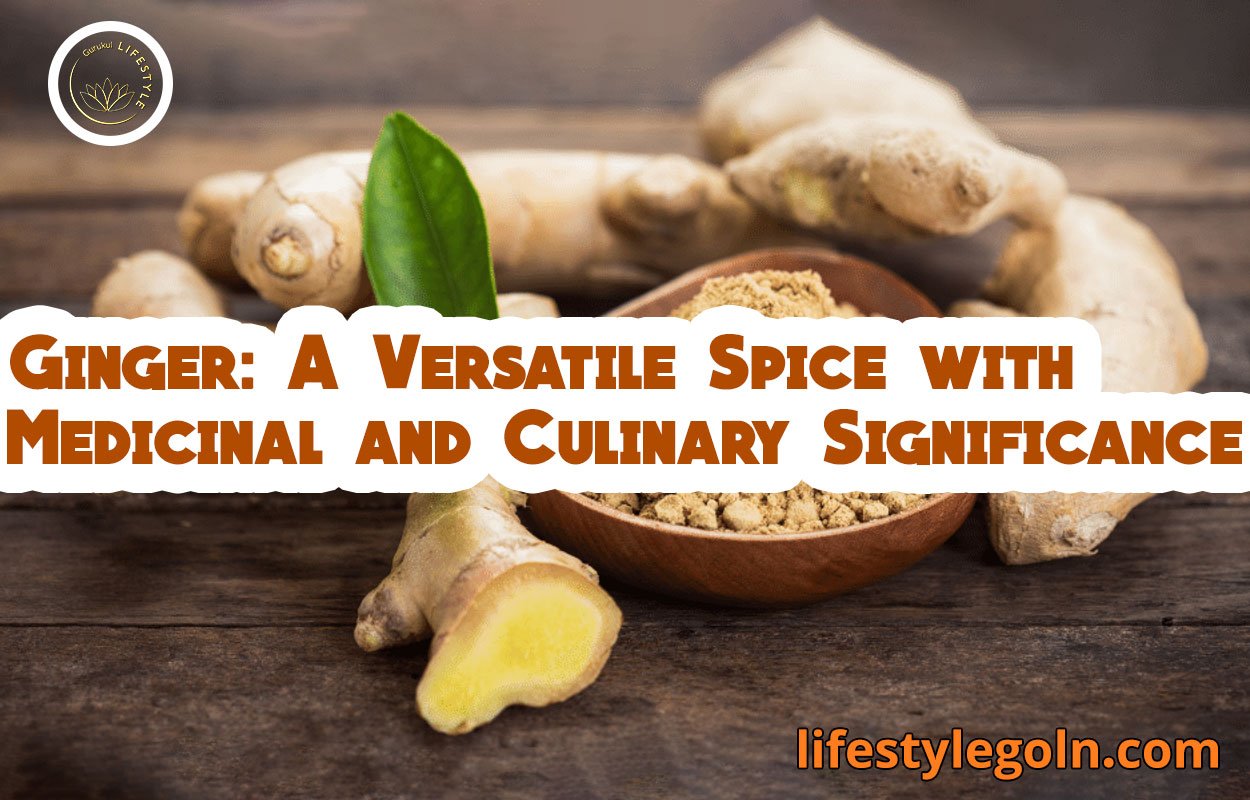Ginger, scientifically known as Zingiber officinale, is a pungent and aromatic rhizome with a long history of use in traditional medicine and culinary practices. Originating in Southeast Asia, ginger has been cultivated for over 5,000 years and has since become a global favorite. This essay explores the fascinating journey of ginger from its ancient medicinal uses to its widespread presence in various cuisines, highlighting its numerous health benefits, culinary applications, and potential future developments.
Ginger: A Versatile Spice with Medicinal and Culinary Significance
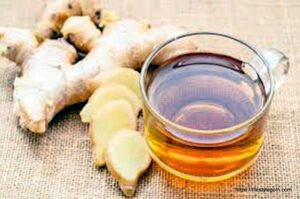
Section 1: Historical Significance and Traditional Medicinal Uses
1.1 Ancient Roots:
Ginger’s historical significance can be traced back to ancient civilizations, including China, India, and the Middle East. The Chinese philosopher Confucius was one of the first to mention ginger as a medicinal herb in his writings dating back to the 5th century BCE. Ginger was highly regarded in ancient India as well, where it was used in Ayurvedic medicine to treat various ailments.
1.2 Traditional Medicinal Uses:
Throughout history, ginger has been revered for its medicinal properties. It has been used to alleviate digestive issues, reduce nausea, and relieve pain and inflammation. In traditional medicine, ginger was often brewed into teas, infused in oils, or incorporated into medicinal pastes to treat a wide range of ailments, including colds, flu, arthritis, and digestive disorders.
1.3 Modern Scientific Research:
In recent decades, scientific research has validated many of the traditional medicinal uses of ginger. Numerous studies have demonstrated the efficacy of ginger in treating nausea and vomiting associated with motion sickness, pregnancy, and chemotherapy. The active compounds in ginger, such as gingerol and zingerone, exhibit potent anti-inflammatory and antioxidant properties, offering potential benefits for managing inflammation-related conditions and oxidative stress.
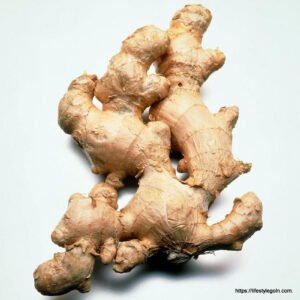
Section 2: Nutritional Profile of Ginger
2.1 Essential Nutrients:
Ginger is a nutritionally rich spice, containing essential nutrients that contribute to its health benefits. It is an excellent source of vitamin B6, which supports metabolism and cognitive function. Ginger also provides essential minerals such as potassium, manganese, and magnesium, essential for heart health, bone density, and muscle function.
2.2 Phytochemicals:
The bioactive compounds in ginger are responsible for its distinct flavor and aroma. Ginger contains gingerols, shogaols, and zingerone, which exhibit potent antioxidant and anti-inflammatory properties. These compounds contribute to the spice’s medicinal effects and overall health benefits.
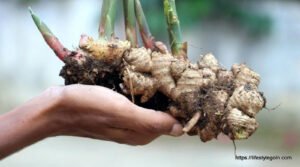
Section 3: Health Benefits of Ginger
3.1 Nausea and Motion Sickness:
Ginger is widely recognized for its ability to alleviate nausea and motion sickness. Research has shown that consuming ginger can reduce nausea and vomiting associated with pregnancy, postoperative recovery, and chemotherapy. Ginger’s antiemetic properties are thought to be attributed to its influence on the digestive and central nervous systems.
3.2 Anti-Inflammatory Effects:
The active compounds in ginger, particularly gingerols and shogaols, have been found to possess potent anti-inflammatory effects. These properties make ginger a valuable natural remedy for managing chronic inflammatory conditions, such as osteoarthritis and rheumatoid arthritis. The spice’s ability to reduce inflammation may also contribute to its potential role in cardiovascular health by supporting healthy blood vessels and reducing oxidative stress.
3.3 Digestive Health:
Ginger has long been praised for its role in promoting digestive health. It aids in the digestion process by stimulating the production of digestive enzymes and enhancing nutrient absorption. Ginger is commonly used to alleviate indigestion, bloating, and flatulence. Its carminative properties help soothe the gastrointestinal tract and reduce discomfort.
3.4 Immune System Support:
Ginger’s immune-enhancing properties are attributed to its antioxidant content. The spice’s ability to scavenge free radicals and reduce oxidative stress contributes to a strengthened immune system. By supporting immune function, ginger may help the body defend against infections and diseases.
3.5 Pain Relief:
In traditional medicine, ginger has been used as a natural pain reliever for centuries. Modern research has provided evidence for ginger’s analgesic properties, particularly in the context of menstrual pain, migraines, and muscle soreness. The anti-inflammatory effect of ginger can also contribute to its pain-relieving potential for conditions like arthritis and joint pain.
3.6 Weight Management:
Ginger has gained attention for its potential role in weight management. Studies suggest that ginger may aid in weight loss by enhancing thermogenesis and metabolism, leading to increased calorie expenditure. Additionally, ginger’s ability to control appetite and reduce cravings may contribute to its supportive role in weight management programs.

Section 4: Culinary Applications of Ginger
4.1 Culinary Versatility:
Ginger’s distinctive flavor and aroma have made it a staple in a wide range of culinary traditions worldwide. Its versatile nature allows it to be used in both savory and sweet dishes, adding depth and complexity to various cuisines.
4.2 Cooking Techniques:
Ginger can be used fresh, dried, or powdered, depending on the desired flavor and intensity. Fresh ginger is commonly grated, minced, or sliced and added to stir-fries, curries, soups, and sauces. Dried or powdered ginger is often used in baking, marinades, and spice blends.
4.3 Beverage Infusions:
Ginger infusions, such as ginger tea and ginger water, are popular beverages known for their comforting and refreshing qualities. These infusions are often consumed to alleviate nausea, promote digestion, and boost overall well-being.
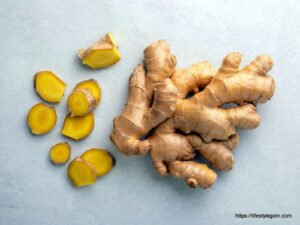
Section 5: Culinary Recipes Featuring Ginger
5.1 Ginger Garlic Shrimp Stir-Fry: Ingredients:
- 1 lb large shrimp, peeled and deveined
- 2 tbsp vegetable oil
- 1-inch piece of fresh ginger, minced
- 4 garlic cloves, minced
- 1 red bell pepper, sliced
- 1 cup snow peas
- 3 tbsp soy sauce
- 1 tbsp honey
- 1 tsp sesame oil
- Sesame seeds for garnish
- Cooked rice for serving
Instructions:
- Heat vegetable oil in a large skillet or wok over medium-high heat. Add minced ginger and garlic, and sauté for 1-2 minutes until fragrant.
- Add the shrimp to the skillet and cook for 2-3 minutes on each side until pink and cooked through. Remove the shrimp from the skillet and set aside.
- In the same skillet, add the sliced red bell pepper and snow peas. Stir-fry for 2-3 minutes until slightly tender.
- In a small bowl, whisk together soy sauce, honey, and sesame oil. Pour the sauce over the vegetables in the skillet and return the cooked shrimp to the pan. Stir everything together until well coated in the sauce.
- Serve the ginger garlic shrimp stir-fry over cooked rice and garnish with sesame seeds.
5.2 Ginger-Molasses Cookies: Ingredients:
- 1 cup unsalted butter, softened
- 1 cup granulated sugar
- 1/4 cup molasses
- 1 large egg
- 2 1/4 cups all-purpose flour
- 2 tsp ground ginger
- 1 tsp baking soda
- 1/2 tsp ground cinnamon
- 1/4 tsp ground cloves
- Pinch of salt
- Granulated sugar for rolling
Instructions:
- Preheat the oven to 350°F (175°C) and line baking sheets with parchment paper.
- In a large mixing bowl, cream together the softened butter and granulated sugar until light and fluffy. Add the molasses and egg, and mix until well combined.
- In a separate bowl, whisk together the flour, ground ginger, baking soda, ground cinnamon, ground cloves, and salt.
- Gradually add the dry ingredients to the wet ingredients, mixing until a soft dough forms.
- Roll the dough into small balls and coat each ball in granulated sugar. Place the balls on the prepared baking sheets, leaving some space between them.
- Flatten each ball slightly with the back of a spoon or your fingers.
- Bake the cookies for 10-12 minutes or until they are lightly browned around the edges.
- Allow the cookies to cool on the baking sheets for a few minutes before transferring them to a wire rack to cool completely.
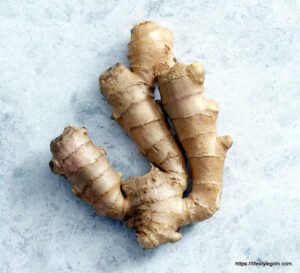
Section 6: Future Trends and Innovations
6.1 Ginger Extracts and Supplements:
The growing interest in natural remedies and plant-based supplements has led to the development of ginger extracts and supplements. These products offer concentrated forms of ginger’s active compounds, providing an easy and convenient way to access its health benefits. Future research may explore the efficacy and safety of ginger extracts for specific health conditions, contributing to their integration into mainstream healthcare practices.
6.2 Ginger as a Functional Food Ingredient:
The rise of functional foods, which provide additional health benefits beyond basic nutrition, presents an opportunity for ginger to be incorporated into a wide range of food products. Ginger-enhanced functional foods, such as ginger-infused beverages, snacks, and condiments, may become more prevalent as consumers seek healthier and more nourishing options.
6.3 Ginger in Personalized Nutrition:
As the field of personalized nutrition continues to advance, ginger’s potential to support individual health needs may be further explored. Genetic and metabolic profiling could be utilized to tailor ginger consumption recommendations to individuals, optimizing its impact on specific health conditions and preferences.

Ginger stands as a remarkable spice with a long history of medicinal and culinary significance. From its ancient roots as a revered medicinal herb to its widespread presence in global cuisines, ginger’s journey continues to captivate people around the world. The spice’s versatile nature, coupled with its myriad health benefits, makes it a valuable addition to both traditional remedies and modern healthcare practices.
As scientific research continues to shed light on ginger’s medicinal properties and culinary potential, the spice is poised to remain a prominent fixture in the realm of holistic health and gastronomy. By embracing ginger’s benefits, individuals can incorporate this versatile spice into their daily lives, reaping its rewards and enjoying a healthier and more flavorful journey to wellness.
See more:
